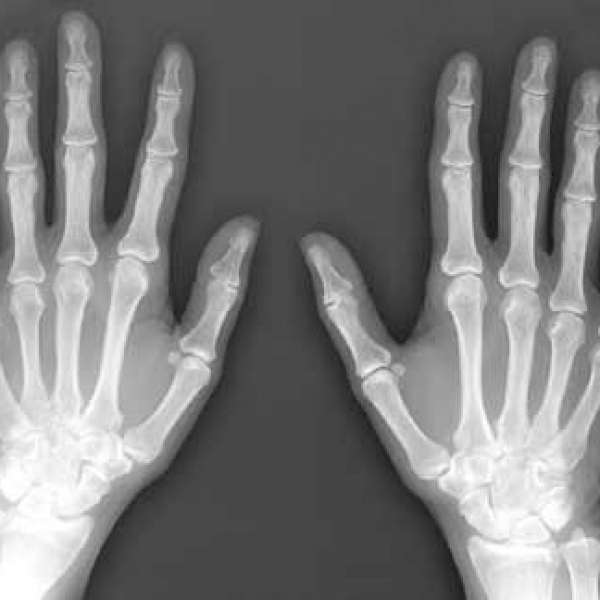Contact Admission
Prostate cancer
PSA, PC (Prostate Cancer = Prostate Cancer)
& Debate about Screening, Diagnosis, Treatment
(Part 1)
The intangible Bui Duy Tam University of Art & Medicine will present the topic this time:
“PSA, PC (Prostate Cancer = Prostate Cancer) & Screening Debate, Diagnosis, Treatment”
PC is a top problem for men over 60. Among my acquaintances, some have died, many have been cured (?) And many have struggled with PSA up and down. This article is very helpful for everyone from non-medical friends to doctors who think they know a lot, but there are still many interesting things to know or to understand more deeply.
Statistics (approved by the Cancer.Net Editorial Board, 03/2018)
PC is the second most cancerous cancer after Skin Cancer and is also the second leading cause of death after Lung Cancer in the US. Currently the US has 2.9 million people with PCs (out of a population of 325 million). According to the American Cancer Society it is expected that in 2018 there will be more:
- About 164,690 new cases of prostate cancer
- About 29,430 deaths from prostate cancer
for PC.
1 out of 9 Americans has a PC and 1 out of 41 males. PC is diagnosed at age 65 or older. Over 70 majority suffer from PC. Most of the 80 suffer from PCs, but not many die from PCs. Please read the following:
Prostate cancer can be a serious disease, but most men diagnosed with prostate cancer do not die from it. In fact, more than 2.9 million men in the United States who have been diagnosed with prostate cancer at some point are still alive today.
Prostate cancer is the most common cancer among men, with the exception of skin cancer. This year, an estimated 161,360 men in the United States will be diagnosed with prostate cancer. For unknown reasons, the risk of prostate cancer is 74% higher in black men than in non-Hispanic white men. Most prostate cancers (92%) are found when the disease is still confined to the prostate and nearby organs. This is referred to as the local or regional stage of disease.
The 5-year survival rate tells you what percent of men live at least 5 years after the cancer is found. Percent means how many out of 100. The 5- year survival rate for most men with local or regional prostate cancer is almost 100%. Ninety-eight percent (98%) are alive after 10 years, and 96% live for at least 15 years. For men diagnosed with prostate cancer that has spread to other parts of the body, the 5-year survival rate is 29%.
(approved by the Cancer.Net Editorial Board, 03/2018)
Anatomy
Just look carefully the image below will know many things:
1 / Urethra (urine duct) passes through the prostate, so when the prostate grows (Benign Prostate Hypertrophy BPH or PC) presses on the urethra and causes urination problems. BPH often occurs in Transitional Zone, so it affects urination more than PC because PC often occurs in Peripheral Zone.
2 / Prostate is located right on the anterior wall of rectum (rectum), so Toucher rectal or DRE (Digital Rectal Examination = Finger Examination) immediately touch Prostate and see regularly soft, larger than normal is BPH, see hardy pet rugged is PC, must do Biopsy right away regardless of PSA.
3 / Surrounding are Seminal Vesicles, Urinary Bladder, Urethra, Rectum, Neuro vascular Bundles so cancer spreads in case of Regional Metastasis.
4 / A little further, behind is the spine, so when Further Metastasis will experience terrible back pain with Retroperitonial & Pelvic Adenopathy. Now radiotherapy can relieve back pain somewhat.
Are you happy when you glance at the picture how much you know about PC?
Physiology
Prostate secretes Seminal Fluid, which blisters out on ejaculation, so it belongs to the exocrine gland (Exocrine Gland) .Thyoid is the endocrine gland (Endocrine Gland) because Thyroxine is born into Seminal's blood. Urethral Glands or Cowper's Glands also secretes Seminal Fluid. Sperm sperm from Testicles, contained in Epididymis in the duct of Vas Deferens to Prostate, was moved swimming, nourished in Seminal Fluid of SeminalVesicles (69%), Prostate (30%) and Bulbo-Urethral Gland (1%).
Seminal Fluid + Sperm (Sperm) = Semen (Semen)
Semen is essentially a gel-loosening by PSA (Prostaste
- Specific Antigene) for Sperm to be unleashed swimming in the Semen Air on the way from prostate through urethra to vagina to meet her ovum eggs. During intercourse Cowper's Gland's Seminal Fluid cleans and neutralizes the urine in the urethra, paving the way for sperm and smoothing a woman's pussy (vagina) to prepare for a smooth penis penetration.
The semen secreted from Bulbo-Urethral Gland cleanses urethra and smooth vagina
Normally, Semen is very few. Intercourse Seminal seminal fluid
New fluids are secreted especially near ejaculation.
The longer the time near ejaculation (Pre-Cum = Pre- Ejaculate), the more semen secreted (especially before intercourse, drinking a lot of water) and when orgasm reaches extreme (Orgasm), You will ejaculate longer because you have to use up a lot of Chimpanzee.
A few things to know for men:
- Testicles continue to produce Sperm until death so it is still possible to give birth for life while the woman is unable to reproduce after menstruation. Whether this is good or bad depends on the circumstances so be wary.
- Vasectomy procedure (tie the 2 ends before Vas Deferens vasectomy so that if you change your mind to have a baby in the future, you can re-connect) is very convenient for couples who want to have a maternity leave because they do not have to open the ovary grandmother.
- Semen has many nutrients to feed sperm, so the Story of Lieu Trai Chi Di has a basis in describing how Ho Ly Tinh likes to suck on a man's sperm.
- Pre-Cum and during Ejaculation the most sympathetic Pleasure should prolong Pre-Cum (Pre Ejaculate), the more Chimpanzee and pleasure more than Super Orgasm. Remember to drink enough water before going into battle!
- Prostate can be squeezed to actively urinate because of thousands of tiny muscle fibers Tiny Muscular Fibers, so in the past, Prostatectomy or Urine Incontinence leaked urine, had to wear diapers, it was very bad.
- If the PC has to remove completely with Neuro-Sparing Prostatectomy (not cut Penile Nerve by mistake), then rhyme Erection but only Dry Orgasm does not ejaculate (ejaculation). Sometimes during intercourse, urine leaking is also annoying for your partner. (!!!) Now it is very good, if you have to cut Penile Nerve because the tumor is too big, you can still graft again. If using Radiation Radiation can not be Urine Incontinence and Impotence, However who dare to guarantee. Avoid Over Treatment is the motto of PC treatment.
At the age to pay attention to Prostate (> 50 years old), one goes to the Urologist's office. The first thing the doctor put on a glove and then stuck his finger in the anus to examine the prostate, a little annoying!
Digital rectal examination (DRE)
Finger anal exam is very important in prostate diagnosis
- Normal: about 40cc volume (equal to a golf ball) soft and steady.
Prostatitis: pain
BPH (benign tumor): larger but still soft and regular.
PC (cancer): Usually larger than normal, but irregularly hard lumps are indicated for biopsy biopsy regardless of PSA.
Most prostate cancers are located in the peripheral zone of the prostate and may be detected by DRE. During this examination a doctor inserts a finger into the rectum to feel the prostate for lumps, size, shape, tenderness, and hardness. A suspect DRE is an absolute indication for prostate biopsy, regardless of the PSA level. In about 18% of patients with abnormal DRE, prostate cancer will be detected regardless of the PSA level.
ULTRASOUND (Ultrasound): usually after the DRE anal examination especially during the first visit with ultrasound prostate ultrasound. The urologist's clinic is equipped with ultrasound.
The last thing in the exam is to hold a blood or urine test (depending on the case) to check the blood Prostate Specific Antigene Biomarkers such as PSA, PSA Derivative (age-specific PSA, PSA density, velocity, free / total PSA ), PSA Isoforms (fPSA, cPSA, ProPSA, BPSA) and new biomarkers (novel biomarkers) such as PHI, 4Kscores tests or in urine for Prostate Cancer Specific Biomarkers such as PCA3 and TMPRSS2- ERG gene fusion.
PSA
Sperm from the testicle through the vas deferens vas deferens up the prostate, attaching to the seminal fluid into a semene in the gel. PSA (Prostate - Specific Antigene) is both caused by normal and cancerous prostatic tissue secreted in the form of ProPSA (inactive form) not working. KLK2 * also known as hK2 * switch (activate) ProPSA to active PSA (ie KLK3 or catalytic action) loosens semen and thus sperm can swim to meet female eggs ovum for fertilization.
* KLK is due to the word Kallikrein in the kallikrein-related peptidase group (it has created 15 members of peptidase or proteolytic enzyme) that the first member KLK1 (of type Chymoptrysin) secretes from pancreas (in Greek, pancreas is Kallikreas). The group took the name Kallikrein. Because it is related to peptidase or proteolytic enzymes, it is called Kallikrein-Related Peptidase or KLK or hK (human Kallikrein) for short. And so we have KLK2 or hK2 and KLK3 or hK3 ie PSA.
Comment: The story is so simple that the wise men display and name too troublesome. The job called Scientific Research is just a bunch of statistical measurements. Each group came up with a conclusion based on data from some people that may not be right for others. We should know the limit of credibility of Science.
PSA with ProPSA and KLK2 or hK2, which are responsible for prostate only but leak (leaked) into the blood a little bit (must be measured in nanograms). People are so happy to measure the small amount that the body loses (leaked) to spy on the situation inside the prostate (because they do not dare to break the door and get a piece to see if it means Biopsy Biopsy) . Taking blood is too easy compared to Biopsy Biopsy (the author had a friend who saw the PSA rise high, fear of cancer causing biopsy, infection in Sepsis blood, fatal death).
Let's see what the scientists found in the loss of PSA into the blood:
PSA leaks into the blood: about 75% binds (bounded) to 3 proteins (most of them are ACT) called Complexed PSA or cPSA, leaving about 25% of the free residue called Free PSA or fPSA (Current immunoassays can detect both cPSA and fPSA forms in the serum). Both add up to be Total PSA or tPSA: cPSA + fPSA = tPSA
Using the PC Diagnostic: Normal or cancerous prostatic tissue also secretes the same amount of PSA, but when the structure is in disarray due to PC cancer, BPH, or anything else. If something disturbs the structure of the prostate such as inflammation, prostatitis, ejaculation (ejaculation), DRE (digital rectal exam = the rectum of the rectum for examination), ... more PSA will escape into the bloodstream, makes us fear cancer (which can actually be for many other reasons)
Read more:
PSA BIOLOGY
PSA is a serine protease member of the human kallikrein family. It is produced in both normal and cancerous prostate tissue and secreted into seminal fluid. Its physiologic function is to liquefy semen from its gel form. Normal prostate architecture keeps PSA confined to the gland, and only a small portion is leaked into the circulation. PSA circulates in free and complexed forms. Free forms represent 5%-35% of total PSA. Complexed forms (65%-95%) are bound to protease inhibitors. Binding inactive protease and PSA in the blood has no catalytic activity.
Serum PSA elevations occur as a result of disruptions in the prostate architecture that allow PSA to enter the circulation. This can occur in disease settings (PC, BPH, or prostatitis) or after prostate manipulation (massage, biopsy, or transurethral resection). Increased levels in PC patients cannot be explained by increased synthesis. In fact, PSA expression is slightly decreased in cancer tissue.
PSA expression is strongly influenced by androgens. Patients using 5α-reductase agents such finasteride and dutasteride show a 50% decrease in detectable PSA level and should have their level doubled to reflect the correct estimated PSA level.
Ethnicity, age, and body mass index (BMI) can also influence PSA levels. Black men without PC show higher levels compared with white men, probably reflecting a higher expression by benign prostate tissue. Lower levels of PSA in obese men, which may be related to the influence of estrogen, can mask the presence of significant cancer
PSA derivatives (age-specific PSA, PSA density, velocity, free/total PSA)
Normal PSA (ngm/ml)
The amount of normal PSA is not fixed, varies with age, by previous readings (ie with rate of increase) and by volume (PSA can be high in BPH due to large prostates).
Depending on Age (the older the prostate structure is, the more looser the prostate structure, the more PSA is absorbed into the bloodstream):
- <50 years old tPSA <2.5
- <60 years old tPSA <3.5
- <70 years old tPSA <4.5
- <80 years old tPSA <6.5
However, in fact based on the cases where the authors know tPSA up to> 10 (11.12.13, ....) Has not yet been cancerous and vice versa, there are cases of very small tPSA <1.0 but still very malignant cancer. In summary, the tPSA does not give any certainty in either direction or scientifically speaking that there are still many false Positive and False Negative or both Sensitivity and Specificity are very poor.
The cancer incidence in patients with PSA levels above 2.0 ng / mL differed only slightly from those with PSA between 4.0 and 10.0 ng / mL. This study revealed that aggressive PC was found even in patients with PSA levels below 1.0 ng / mL.
Depending on the Speed of Increase
PSA VELOCITY or PSAV (PSA Acceleration Rate) exceeds 0.75ng / ml within 1 year of contacting the PC.
PSA DOUBLE TIME or PSADT (PSA Double Acceleration) is only used to decide on the treatment of Active Surveillance Problems.
(The application of PSAV or PSADT is still very limited because of biological fluctuations and inconsistent measurement methods)
PSA VELOCITY AND PSA DOUBLING TIME
PSAV greater than 0.75 ng/mL per year was significantly associated with PC. This cutpoint has shown a 79% sensitivity and 90% specificity in detecting prostate cancer in men with PSA levels between 4.0 and 10.0 ng/mL. Sensitivity, however, dropped to 11% in patients with PSA below 4.0 ng/mL
The clinical use of PSAV is limited. Physiological fluctuations in PSA levels and differences in assay standardization compromise its use in the short term
PSA doubling time (PSADT) is the time required for PSA to double. It is mostly used to monitor disease progression after radical therapy or as a parameter to decide when patients treated with active surveillance should undergo radical therapy. PSADT has not been shown to be useful in prostate cancer diagnosis.
PSA DENSITY
Divide the amount of PSA in the blood divided by the volume of prostate measured by Transrectal Ultrasound or MRI to produce PSA DENSITY or PSAD. PSAD is greatly increased in PC.
(The normal prostate volume is 40 cc. If the tPSA is 4ngm / ml, then PSAD = 0.10. In the case of BPH, the prostate volume can be twice as 80 cc so the PSA increases to 8ngm / ml, the PSAD is still 0.10. cutoff at PSAD = 0.10 or 0.15 Many research groups cutoff between 0.10-0.18. However, the use of PSAD is limited because it is inconvenient, expensive and also inaccurate).
Conclusion- See here, tPSA does not give us a temporary concept that is certain of cancer or not. There is no one low level for tPSA that says PC free. On the contrary, there is no one highest level of tPSA for sure PC. So we must consider the following facts:
People with the same amount of tPSA, but their risk of cancer, PC risk depends on the proportion of Homosomal components in tPSA, which we call PSA ISOFORMS:
* Free PSA and Complexed PSA
When PSA leaks into the bloodstream, a large portion (approximately 75%) is bounded to three proteins (mostly ACT) called Complexed PSA (cPSA). The small part (about 25%) that is free is called Free PSA (fPSA). When cPSA is increased more than fPSA, the percentage of fPSA / tPSA is smaller with cancer and less aggressive in more aggressive cancer. Free PSA%> 25%, the risk of cancer only 8%. Free PSA% <10%, the risk of cancer up to 56%.
(In the case of taking Finasteride, both tPSA and fPSA were reduced so PSA% remained unchanged)
Free PSA is present in the blood in three different forms:
* ProPSA is the inactive form of PSA that we discussed earlier. ProPSA increases over other forms of fPSA for cancer so take ProPSA% (ProPSA / fPSAX100) for better PC diagnosis and reduce unnecessary biopsies when high tPSA is present.
* Intact PSA is an intact PSA that is not interrupted, just like the original PSA but no longer active (enzymeatically) like native PSA in prostate. IPSA levels do not increase with cancer, but the ratio to fPSA is much higher in cancer (probably because fPSA decreases with cancer as discussed above).
Intact PSA is an uncleaved form of PSA, and it is similar to native PSA except it is enzymeatically inactive. There are no differences in iPSA levels in men with or without cancer, but the ratio of this marker to fPSA was significantly higher in men with cancer
* BPSA is iPSA that has some amino-acid deactivated. BPSA is related to the prostate volume and the transition zone and increases with BPH so the BPH distinguishes BPH from the PC.
BPSA is formed when iPSA is cleaved at amino-acid residues Lys145-146 and Lys182-183, and is present in prostate tissue, serum, and seminal fluid. BPSA has been associated with prostate volume and is highly associated with the transition zone; its levels are increased in patients with BPH. BPSA levels have shown potential for improved distinction of PC from BPH
Prostate Health Index or PHI is a composite indicator of tPSA, fPSA and ProPSA, used before deciding on Biopsy to avoid unnecessary biopsies and overtreatment.
4Kscore test is another test that incorporates PSA. The 4K score uses a prediction model based on clinical variables (age, prior biopsy, digital rectal examination results) and laboratory measurements of total PSA, free PSA, intact PSA, and a related protein known as hK2 (human kallikrein- related peptidase 2) .
4Kscore test shows possibility of Agressive High Grade PC
So far we have only mentioned PSA, Derivatives and Isoforms of PSA that PSA is only prostate - specific biomarker, not a prostate cancer specific biomarker, so it is difficult to decide in the process of making Biopsy. Here are a few new Biomarkers (Novel Biomarkers) that are truly Prostate Cancer Specific Biomarker:
PCA3
PCA3 (Prostate Cancer Antigen 3) is found a lot in prostate cancer tissue and very little in normal prostatic tissue, excreted in the urine so urine is taken out (after prostatic massage) .PCA3 has a high degree of Sensitivity and Specifity. More than PSA should be used to solve cases where negative biopsies are still high. This will reduce the unnecessary biopsies (I have a friend who died of biopsy sepsis). However, if PCA3 is over 35, then they have to do biopsy again to know the treatment direction ..
A newly discovered biomarker is known as PCA3 (prostate cancer antigen 3). PCA3 may help to discriminate between cancer-related versus nonspecific PSA elevations. PCA3 was initially identified by utilize prostate cancer tissue with nonmalignant normal prostatic tissue. PCA3 is a type of genetic material known as noncoding RNA that is found at high levels in prostate cancerous tissue. But unlike PSA, it is only present at a low level in benign prostatic tissue. Hence PCA3 can be considered a prostate cancer specific marker.
While PSA is detected in the blood, PCA3 is measured in the urine obtained after prostatic massage. The main a
dvantages of PCA3 over PSA testing are its higher sensitivity and specificity. In particular, PCA3 may be useful for identifying prostate cancer in men who initially had negative biopsies despite an elevated PSA. This is why the use of a PCA3 test may help reduce the number of potentially unnecessary biopsies generated by nonspecific positive PSA screening tests. PCA3 scores that are over 35 are considered higher risk and would then warrant investigation by a prostate biopsy. The 2013 AUA guidelines on early detection of prostate cancer recognize that PCA3 plays a role as a secondary screening test (after PSA screening) and can be used as an adjunct for informing decisions about the need for biopsy or repeat biopsy
TMPRSS2-ERG gene fusion:
ERG (ETS-related gene) is a gene that causes cancer (oncogene) and is a member of the ETS family (erythroblast transformation- specific).
ERG is compatible with TMPRSS2 protein (Transmembrane protease, serine
2) into an oncogenic fusion gene commonly found in human prostate cancer. TMPRSS2-ERG gene mixture
(TMPRSS2-ERG gene fusion) disrupts the structure of cells to induce cancer prostate. In between 40% -70% of PC, there is a lot of ERG or mixture of TMPRSS2-ERG protein (TMPRSS2-ERG gene fusion), so TMPRSS2-ERG gene fusion can become a promising biomarker for PC.
ERG oncogene, identified as a transcription factor of ETS family, located on chromosomal band 21q22 is overexpressed in over 50% of PC. Transmembrane protease, serine 2 (TMPRSS2), a prostate-specific and androgen regulated gene, locates very closer to ERG on the same chromosome. It has been identified that the overexpression of ERG in major PC was driven by fusing with TMPRSS2. In recent studies, TMPRSS2- ERG gene fusion is the pervasive variant in about 40% to 70% PC. Due to various detecting method, it is expected that TMPRSS2-ERG gene fusion might be a promising biomarker of PCa.
The combination of PCA3 and TMPRSS2-ERG gene fusions as diagnostic biomarkers for prostate cancer
PCA3 & TMPRSS2-ERG gene fusion is Prostate Cancer Specific Biomarkers (not like PSA and Derivatives & Isoforms are just Prostate Specific Biomarkers) found in urine, so it is very convenient and effective in cancer diagnosis and reduce the number of unnecessary Biopsies,
PCA3 and TMPRSS2-ERG gene fusions as diagnostic biomarkers for prostate cancer
The PCA3 gene, a non-coding RNA (ncRNA) that is highly expressed in prostate cancer (PCa) cells, has been identified as a molecular biomarkers to detect PCa, of which PCA3 has already under clinical application. PCA3 is strongly overexpressed in malignant prostate tissue compared to benign or normal adjacent one. Newly, PCA3 is considered to be a promising biomarker in clinical diagnosis and targeted therapy. The diagnostic significance of PCA3, however, is awaiting further researches.
Moreover, it has been demonstrated recently that TMPRSS2-ERG gene fusion is identified as the predominant genetic change in patients diagnosed with PCa. Recent study revealed that combination of the PCA3 and TMPRSS2-ERG gene fusion test optimizes PCa detection compared with that of single biomarker, which would lead to a considerable reduction of the number of prostate biopsies
Probably, urine and venous blood specimens after prostate massage is the most easily obtained specimen for biomarkers detection. It could be collected non-invasively and is available in large amount. Urine markers are especially attractive when the prostate in the early stage disease and setting of screening
(Chin J Cancer Res. 2016 Fe)
There is now enough information available to decide to do Biopsy.
In case you are hesitant or hesitant to do biopsy, one last test, MRI, may be done. In fact, all types of biomarkers are just like a blind fortune teller to touch an elephant: the person who feels the feet looks like an elephant, the one who touches the trunk feels like an elephant, he thinks the elephant. Can't see even the elephant. Viewing with ultra sound shows a blurry image.
MRI scans soft tissue soft tissue layers so it's much clearer, much better. See also the neurovascular bundles, urinary bladder, rectum or spinal metastases if cancer has spread. Readers will wonder why they didn't do an MRI in the first place. The reason it is easy to understand is that making MRI is complicated and expensive. Taking a small amount of blood or urine is very simple, it is very convenient to screening to lead to further diagnosis. However, keep in mind that the MRI is not 100% sure (some think it is only 50/50). All the troubles said in order to avoid the Unnecessary Biopsies, Over Diagnosis and Over Treatment (which caused many people to suffer, regret, and even… DEATH).
Now is the time to Decide a job BIOPSY!
(The next post will continue with the Biopsy section and depending on the results of the Pathology, we will discuss
Treatment Treatment. There will be more excitement!) Bui Duy Tam
Huong Tam Villa, Sunset Avenue, San Francisco City
June 14, 2018
Other news
- Therapeutic potential and mechanisms of mesenchymal stem cell-derived exosomes as bioactive materials in tendon–bone healing ( 08:38 - 23/11/2023 )
- Symbol of medicine ( 19:38 - 19/09/2021 )
- The history of the development of medicine worldwide and in Vietnam ( 18:58 - 19/09/2021 )
- Pharmacology in mind ( 08:42 - 04/02/2021 )
- Nitric Oxide and other medical contributions over 2 decades ( 08:19 - 11/12/2020 )
- Scientists Create First Full-Size 3D Printed Human Heart Model ( 09:32 - 10/12/2020 )
- How Many People Need Vaccines to Reach Herd Immunity? ( 09:25 - 10/12/2020 )
- Whitmore's disease increased in Central ( 07:56 - 19/11/2020 )
- Diabetes - the silent killer ( 08:17 - 16/11/2020 )
- Lung cancer may be mistaken for COVID-19 ( 08:30 - 21/10/2020 )








